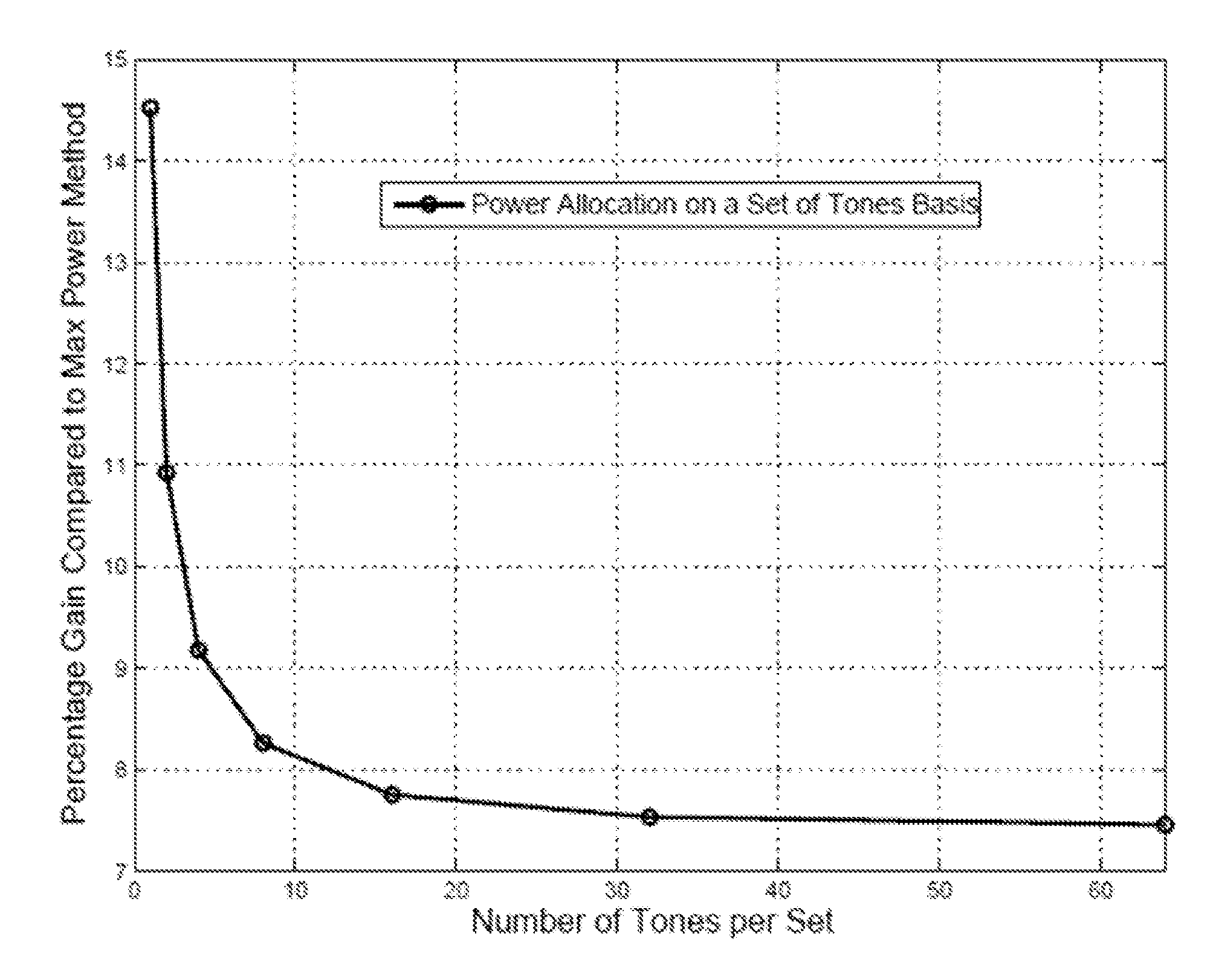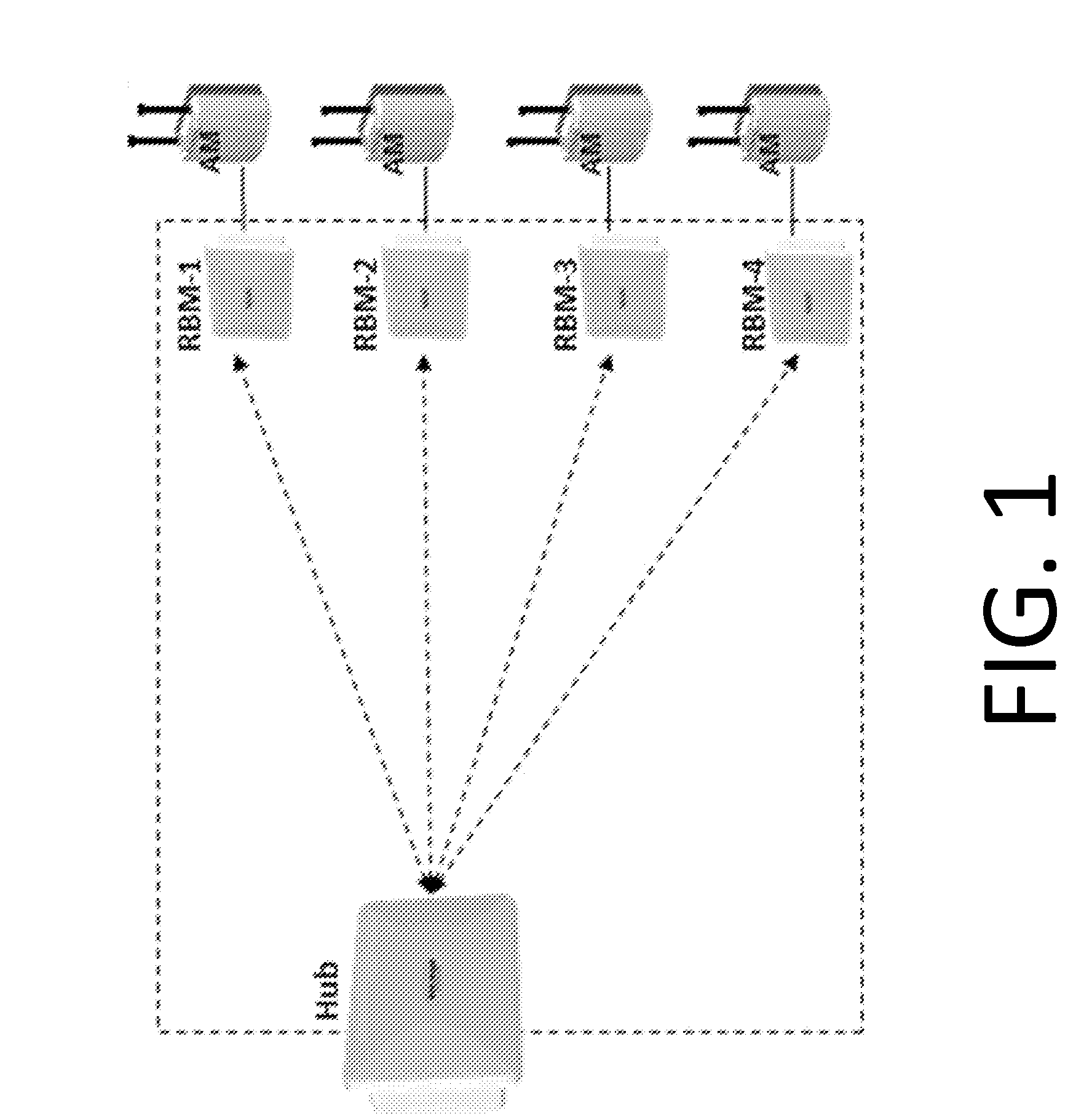Interference mitigation with scheduling and dynamic power spectrum allocation for wireless networks
a wireless network and power spectrum technology, applied in the field of interference mitigation, can solve the problems of reducing the performance of wireless systems, affecting the performance of wireless networks, so as to reduce computational complexity, improve performance, and reduce the effect of computational complexity
- Summary
- Abstract
- Description
- Claims
- Application Information
AI Technical Summary
Benefits of technology
Problems solved by technology
Method used
Image
Examples
first embodiment
[0073]Thus, a method called IFEM, calculates the power of the lth hub at the nth tone using the following iterative equation:
PD,ln(t+1)=[wD,lk∑j≠lwD,jk′hljk′n2σ2+∑i≠jPD,in(t)hijk′n2]0SDmaxEquation3(IFEM)
where k is the scheduled RBM of the lth hub at the nth tone, and k′ is the scheduled RBM of the jth hub at the nth tone.
second embodiment
[0074]A method MARA IFEM, on the other hand, calculates the power of the lth hub at the nth tone using the following iterative equation:
PD,ln(t)=[wD,lk∑j≠lwD,jk′h_ljk′2σ2+∑i≠jPD,in(τij)h_ijk′2]0SDmaxEquation4(MARAIFEM)
[0075]In MARA IFEM, the per-tone channel gains are replaced by the frequency domain average channel gains used for IFEM.
[0076]IFEM and MARA IFEM can achieve a throughput improvement of up to 14% as compared to traditional networks with maximum power transmission. Both IFEM and MARA IFEM are computationally feasible, and fast in convergence. They can be implemented in a distributed fashion, and asynchronously at each hub.
[0077]With respect to MARA-IFEM, as disclosed in Beaudin, methods are provided for measuring the channel gain between each hub and each RBM Unit, periodically during active service. The corresponding measurements can be represented as a channel matrix whose entries describe the frequency domain channel gains between each hub and each RBM of the interfe...
third embodiment
[0078]It will be apparent that the MARA channel measurements in Beaudin can be done on a per-tone basis, for every hub-RBM pair. They are subsequently provided to either a central server for further centralized processing, or to each of the several hubs for distributed processing. To decrease the overhead of such exchange of information, the MARA measurements can alternatively provide the frequency domain average channel gains. For the sake of notation simplicity only, the MARA measurements used in the text denote the frequency domain average channel gains. Those measurements are of particular interest in fixed deployment scenarios, as is the case for wireless backhaul links, where the fading is fairly flat. The periodic repetitions of the measurements of the Self-Organizing Network (SON) method make the measurements even more useful, as it allows adapting the radio resource allocations with the dynamically changing environment. MARA measurements can therefore be utilized for interh...
PUM
 Login to View More
Login to View More Abstract
Description
Claims
Application Information
 Login to View More
Login to View More - R&D
- Intellectual Property
- Life Sciences
- Materials
- Tech Scout
- Unparalleled Data Quality
- Higher Quality Content
- 60% Fewer Hallucinations
Browse by: Latest US Patents, China's latest patents, Technical Efficacy Thesaurus, Application Domain, Technology Topic, Popular Technical Reports.
© 2025 PatSnap. All rights reserved.Legal|Privacy policy|Modern Slavery Act Transparency Statement|Sitemap|About US| Contact US: help@patsnap.com



